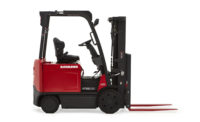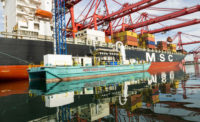IoT tools for tomorrow’s dispatchers

Planning routes with pen and paper is time-consuming and often inaccurate. If you have dozens of customers and multiple drivers, it can take hours. And, after all that time spent, how do you even know you’re going to end up with a truly optimized route?
There are many factors involved with route planning, such as traffic, construction, weather and customer availability. It’s easy to make a mistake and mess up a route. Such a mistake could seriously delay drivers.
Route optimization software can plan 100% accurate routes in 30 seconds or less. All you need to do is plug in your customer’s addresses, and the software takes care of the rest.
Some route planners have a plugin that connects a company’s e-commerce platform to route planning software to automate the process of transferring customer data.
The importance of avoiding left turns
Did you know that UPS saves hundreds of millions of dollars a year, simply by avoiding left turns?
Think about it: when your drivers turn left, they don’t have the right of way. They need to wait for traffic to clear before they can take the turn. There’s no telling how long that will take, and all that idling eats up a lot of time and gas.
This is an especially big problem for big rigs, as they may need to take up an extra lane to not clip anything.
That’s why companies should invest in the right route mapping software. With just the touch of a button, a route planner can take all the left turns out of the routes for you. That would take hours to do by hand.
Same-day delivery software also provides sunrise/sunset restrictions. It’s dangerous for drivers to drive east during sunrise or west during sunset, as the sun gets in their eyes, making it difficult to see.
Route planning software enables users to set up routes, so that drivers make it to all their stops on time while avoiding driving east during sunrise/west during sunset.
Keep a close eye on your drivers
One of the biggest challenges for a dispatcher is that you can’t see what your drivers are actually doing when they’re on the road.
Optimized routes won’t do you much good if your drivers aren’t actually following the routes given to them. Your drivers might be stopping for snacks or even running personal errands while they’re on the clock.
That’s why it’s important that final mile delivery software entails a GPS tracking feature, so you can see exactly where your drivers are and how fast they’re going in real-time.
Keep customers in the loop
Geofencing is another feature included in a route planner. This feature lets users draw custom borders over a real-world map. Then, certain actions are triggered when one of the drivers crosses through a border.
For example, you draw geofences around your customers, and then have it so that a text message is automatically sent to customers when the driver is about to arrive.
You can also use geofences to automate the process of driving, checking in when they arrive to a stop and checking out when they leave. This is said to save drivers about 30 seconds or so at each stop.
Look for territory mapping
It’s a huge waste of time and gas to send drivers back and forth across an entire service area. Territory manager lets users split the service area up into separate territories and assign a driver to each territory.
Territory mapping also enables users to stay organized when you have customers that are only available on certain days (for example, you can put all your customers that are available on Monday-Wednesday-Friday into one territory and customers that are available on Tuesday-Thursday into another).
Looking for a reprint of this article?
From high-res PDFs to custom plaques, order your copy today!





